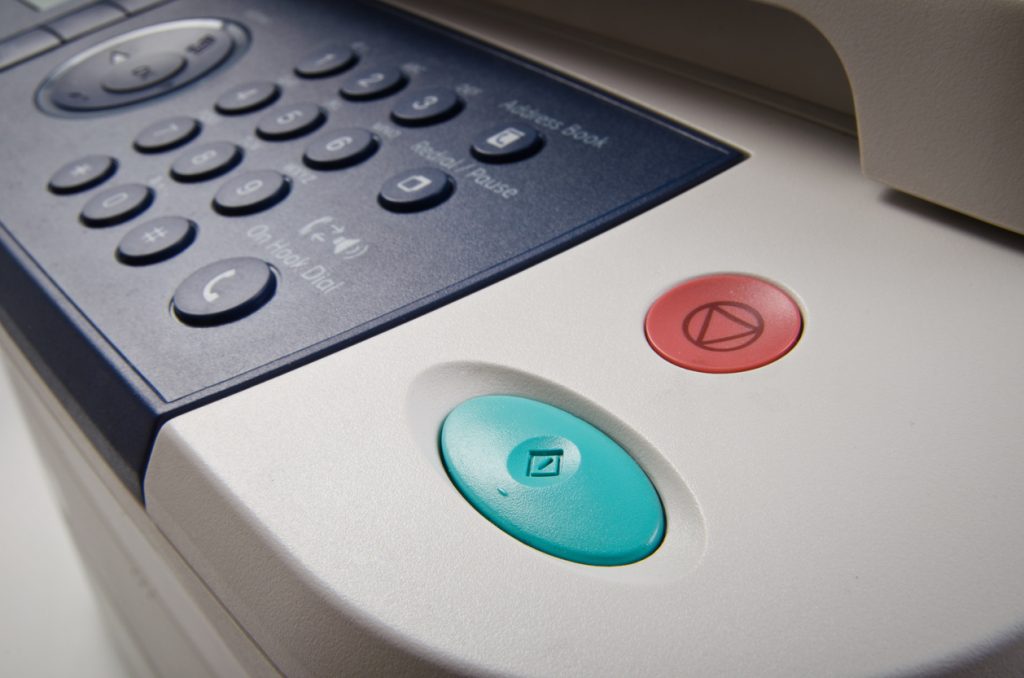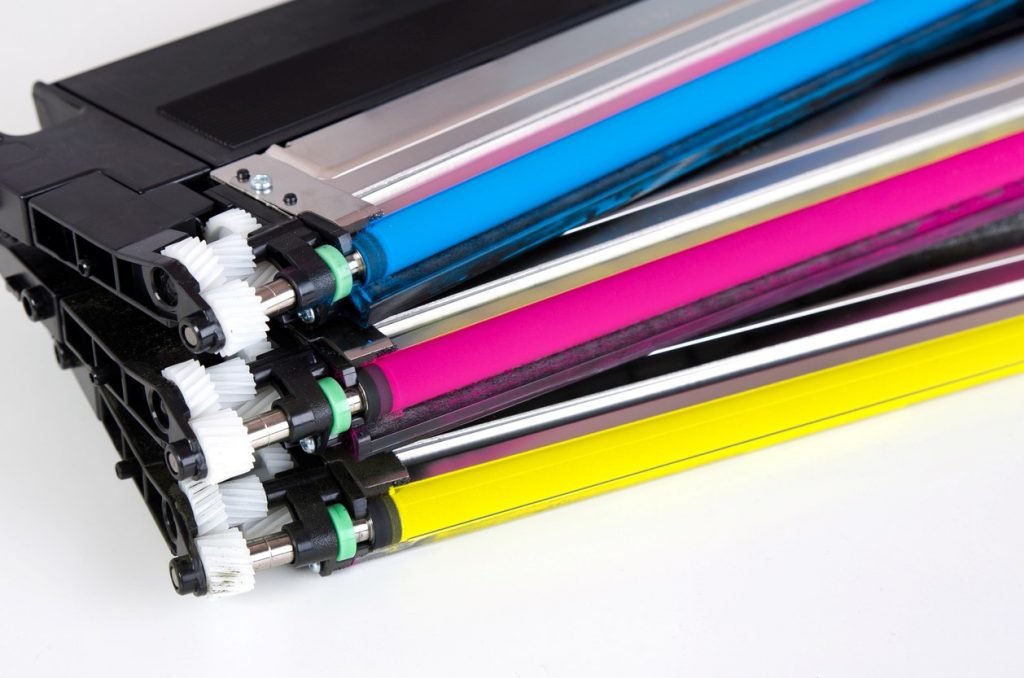How Does A Laser Printer Work?

Last Updated on September 28, 2021 by Christian Ralph
A significant percentage of workplaces across a huge range of industries use printers every day, and workplace printers tend to be laser printers rather than inkjet.
How a laser printer actually works is a mystery to most people, however, so we’re here to explain exactly how documents go from screen to page using a laser printer.
How a laser printer works
They work by using a heated wire to positively charge a drum, which is then passed over by a laser that reverses the charge in the areas that it hits. The now-negatively charged areas of the drum represents the image or text that is to be printed.
A toner roller is passed over the drum, and toner particles stick to the negatively charged areas. A sheet of paper is then fed underneath the toner-coated drum and the toner is passed onto its surface, creating a printer copy of a digital document or image.
With the first laser printers being made commercially available in 1976, laser printing has proved itself as a reliable and effective printing solution.
Incorporating laser beam technology in order to provide high precision outputs, laser printers are the perfect choice for offices and busy workplaces.
Step by step: the laser printing process
The laser printing process is fundamentally different from the inkjet printing process, which utilises precision streams of ink to print onto the paper.
The laser printing process involves 9 key steps.
- The data required to be printed is transferred from the computer to the laser printer. This is usually via an ethernet cable or wirelessly if the printer has wireless capabilities.
- The printer then has to reach the required temperature via the heating of the corona wire. This wire once heated, passes an electrical static charge to the drum unit.
- The drum unit, now positively charged, is ready to receive the laser beam and begin the data transfer process directly onto the drum.
- Once the laser is activated, the beam reflects off a moving mirror unit which directs the beam directly onto the drum unit.
- In the areas where the beam hits the drum, the charge is changed from negative to positive. The negatively charged areas now represent where toner particles will adhere to the drum and be directly transferred onto the paper.
- The ink roller now begins to coat the drum with toner. Toner is comprised of microscopic ink particles which, now positively charged, adhere to the negatively charged areas on the drum unit.
- A positively charged sheet of paper is now passed close to the drum, attracting the negatively charged toner particles onto the page.
- The paper, now containing the inked content, is passed into the fuser unit where the rollers fuse the toner particles to the paper.
- The page is then passed through to the other side of the copier, and you now have one successful printout!
Laser printer components
A modern-day laser printer comprises of 8 main components, each essential in producing the superb print quality we are used to today. The anatomy of a printer includes:
Power supply
Requiring a high voltage in order to charge the drum, the power supply works to convert AC current into higher voltages needed for the transfer process.
Photosensitive drum
The role of the drum unit is to attract positively charged toner particles onto its surface. In order to achieve this, laser printers usually use a corona wire which carries a high voltage. Once the drum is adequately charged, the laser beam is guided onto the surface of the drum via mirrors which precisely scans the images onto the surface of the drum.
Toner cartridges
Laser printers use microscopic ink particles in a powdered form known as toner. Once heated by the fuser unit, the toner melts allowing it to be fused to the paper fibres under pressure.
Like inkjet cartridges, toner is most commonly used in the CMYK colours. Combined, these colours can recreate any colour palette.

Corona wires
The primary corona wire is responsible for positively charging the drum unit in order for the drum unit to be able to draw the toner particles onto its surface.
The transfer corona wire is given a negative charge in order to negatively charge the paper and draw the toner particles from the surface of the drum onto the sheet.
Both of these wires require high voltages in order to create adequate charge, this is supplied by the high voltage power supply.
Fuser unit
The fuser unit comprises of two heated rollers used to physically fuse the toner particles onto the paper.
Using high levels of heat and pressure, the powdered toner particles are melted and form a strong bond with the fabric of the paper.
Given the high speed that the fuser unit operates, the sheet has as little contact with the paper as possible which avoids the risk of fire.
Waste Toner Bottle
The waste toner bottle is used to collect excess toner from the photosensitive drum that is unused during the printing process. Excess toner is deposited in a reservoir and once full, the waste toner bottle must be replaced.
Advantages of laser printers
Laser printers have several advantages when compared to inkjet technology.
Speed
The most obvious advantage of laser vs inkjet is speed. With higher first page and pages per minute speeds, laser printers offer a clear edge over their inkjet counterparts.
These faster speeds make laser printers the perfect choice for the office environment. Suited to high volume, high speed printing, laser printers naturally lend themselves to busy work spaces.
Running Costs
Although requiring a higher initial outlay in spend, toner yields are generally far higher and more economic viable than ink cartridges.
Designed for high volumes, toner cartridges prove to be the cheaper choice when compared to ink cartridges.
With extra high capacities available in many instances, toner cartridges allow for thousands of pages of uninterrupted printing.
Reliability
Laser printers are designed for high volume, high speed printing and need to be designed with reliability in mind.
More rigorous testing and sturdier materials mean less downtime and an overall increase in reliability making them perfect for busy workspaces.
Quality
With the microscopic properties of toner, laser printers offer far higher precision than the ink droplets used in inkjet printing. This higher level of precision translates into higher levels of quality with increased resolution and fine detail.
Laser printers offer a superior printing experience at a lower overall price than inkjet printers. This makes them the clear choice for the office environment.
